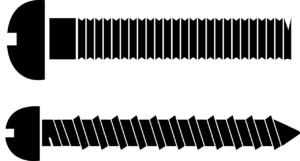Find Top 6 Factors For in Pusher Furnace Design

Heat is one of the major requirement in a lot of industries. It is used to dry wet material or to start a reaction. The two major requirements from a heating apparatus is controllable and uniform heating. Temperature required can range from just hot to extreme heat. All these are usually only achieved through industrial furnaces and ovens. These devices are built to create a high heat environment that uses energy efficiently.
One of the most popular types of industrial furnaces is the pusher furnace. It is a type of continuous furnace. It is so called because the material to be heated are pushed across the earth by a ‘pusher’. The pusher works on an electric on hydraulic charge. Pusher furnace for continuous type heat treatment are used machine building and metallurgy. This type of furnace can reach very high temperature — from 400 degrees to 1400 degrees.
The furnaces are so designed that heating can take place for extended period under very controlled environment. The continuous supply of heat is especially suited to certain functions where we need constant temperatures. The type of furnace can differ significantly. It can classified according to the design or as per the size often furnace.
Important Factors
Factors that must be considered when designing pusher furnace for continuous type heat treatment:
Operational safety: The pusher furnace has far sturdier design than the usual industrial furnace. It goes beyond the usual furnace or oven design by creating a furnace that is bigger and built with a stronger structure. The furnaces are built using long-lasting materials like brick or aluminium.
1. Individual temperature zones
The pusher furnace can have independently controlled temperature zones. This allows us to create temperature profiles along the length of the furnace. The different temperatures zones can be critical for energy efficiency because it allows us to use different temperature in the same machine. While designing individual temperature zones, we need to consider load geometry, energy distribution and efficiency and temperature gradation.
2. Heating element
Different elements can be used to generate heat. This depends on requirements like temperature and desired atmosphere. Some heating elements create specific atmosphere which may be ideal in certain processes, while harming others. The location of the heating element is also significant because it tells us how easily we can access it in case of an emergency. This aids in better control, efficiency and access for maintenance. We also have to consider the by-products of certain elements.
3. Control
No pusher furnace for continuous type heat treatment can be efficient without a proper controlling mechanism. We need control to manipulate temperature, the objects inside, for periodic maintenance and to see that energy is utilised efficiently. Control panels can be quite detailed, depending on the complexity of the overall design. Among the other controls one can find here are level of automation, system for loading and unloading, mounting mechanism, return system, electrical or gas manipulation and so on. The level of complexity in the control panel also requires a level of high training to utilise it in the correct manner.
4. Muffle design
We may need a muffle where we have volatile by-products or a special atmosphere. The muffle is used to control the load and the gases in the furnace. The design element that we have to consider here is the material of the muffle and its cross-section. This will be decided as per the characteristics of the material and the operational atmosphere we are looking for.
5. Maintenance
Like any other machine or heating system, a pusher furnace requires regular maintenance for optimum functioning. However, some parts are exposed to higher wear and tear than others. Undertaking frequent maintenance for vulnerable portions can help us to extend the life of the overall structure. This can be managed by making the design compliant with easy maintenance. Such parts are made easy to access and replace. Cleaning and other simple maintenance can be carried out daily and replaced easily without dismantling the entire structure. We can also follow a modular construction to carry out maintenance piecemeal.
6. Air flow
Designing the air flow is crucial in a pusher furnace for continuous type heat treatment as it will decide the heating within. It also helps us to control the flow of volatile by-product. Sealing of the furnace is also an important factor here because it restricts outside elements in influencing air flow.






